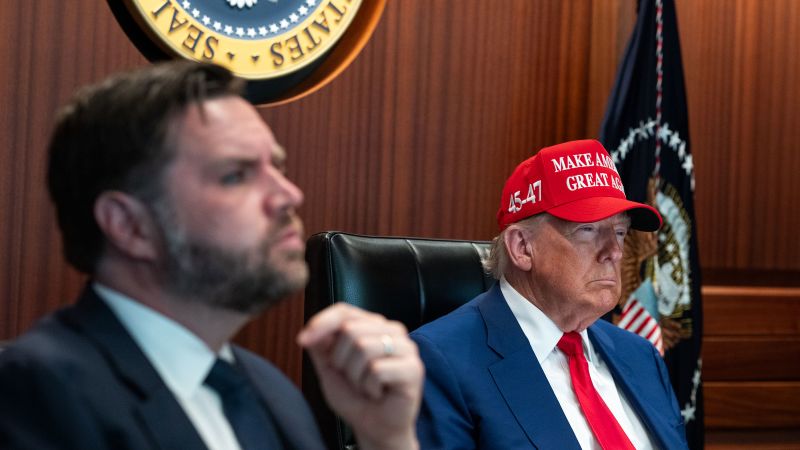In a dramatic series of events, President Donald Trump authorized airstrikes on three Iranian nuclear facilities just as he was relaxing at his golf club in Bedminster, New Jersey. The timing of this decision coincided with the preparations of B-2 stealth bombers, loaded with 30,000-pound bunker busters, set to launch at midnight from Missouri. The intended targets—Fordow, Natanz, and Isfahan—were critical sites within Iran’s nuclear program. Trump’s demeanor at the club appeared anxiety-free despite the significant implications of his decision, which not only risked escalating tensions in the Middle East but also had the potential to shape his presidential legacy.
The airstrikes were part of a highly secretive operation, aptly named “Operation Midnight Hammer.” Trump, attempting to safeguard the operation from public scrutiny, even orchestrated a diversion by deploying another set of aircraft in a different direction. During this period, Trump hosted Sam Altman, the CEO of OpenAI, at an event at the club, where the president jokingly expressed optimism about advancements in artificial intelligence, oblivious to the military actions about to unfold.
Fast forward a day later, Trump found himself in the Situation Room at the White House, donning his iconic red “Make America Great Again” hat. In front of a wall of monitors, he monitored the strikes he had authorized. Trump later proclaimed the airstrikes a “spectacular military success,” asserting that it would lead Iran, which he deemed the “bully of the Middle East,” to seek peace. However, this bold declaration raised alarms regarding potential Iranian retaliation and uncertainties surrounding the administration’s strategy moving forward.
The airstrikes were the culmination of a series of calculated steps taken by Trump and his advisors over several weeks, amidst fluctuating public statements and private deliberations. The decision arose after Trump grappled with conflicting messages regarding military engagement and negotiations with Iran. On the surface, he maintained a stern approach on social media, threatening military action, yet privately expressed concerns that a military strike might entangle the U.S. into a protracted conflict in a war-torn region.
Despite moments of public assurance suggesting he might reconsider, sources indicated that by Thursday, prior to the strikes, Trump had already settled on the course of action. Vice President JD Vance stated in an interview that Trump had the authority to cancel the strikes until the final moment but chose not to do so. The planning for these airstrikes had been a tightly guarded process; opting for secrecy included deferring the strike decision to maintain operational uncertainty. According to Defense Secretary Pete Hegseth, the administration’s prior discussions had indicated that Iran was not ready to negotiate a new nuclear deal, heightening the stakes of military intervention.
On Friday, two days post-Trump’s public deadline for negotiation with Iran, the operation unfurled with the stealth bombers embarking on a historic 18-hour mission—the longest for the fleet in decades. Trump was assured that the American bombers were sufficiently equipped to dismantle the fortified sites with precision, but this renewed involvement in Middle Eastern affairs brought the specter of retaliatory attacks from Iran, raising fears of a long-term military entanglement.
Behind the scenes, however, planning and contingencies were already underway as the administration prepared for Iranian reprisal, despite publicly portraying the operation as a contained act. Following the strikes, which involved significant numerical strength from aerial and naval assets, Trump announced their execution via social media, celebrating the success of this military maneuver. Following attacks on critical sites, including the Fordow facility, Trump affirmed the effectiveness of the operation but left the situation in a precarious balance, indicating potential for further action should Iran retaliate.
To summarize, this moment encapsulated Trump’s decision-making, strategy, and the high-stakes environment of international relations. The meticulous preparation, command of military resources, and the unfolding response to Iran reveals much about the challenges faced at the intersection of diplomacy and military involvement. The complexities of negotiation, military readiness, and the unpredictable nature of international responses paint a picture of a presidency grappling with one of its most consequential foreign policy challenges.



